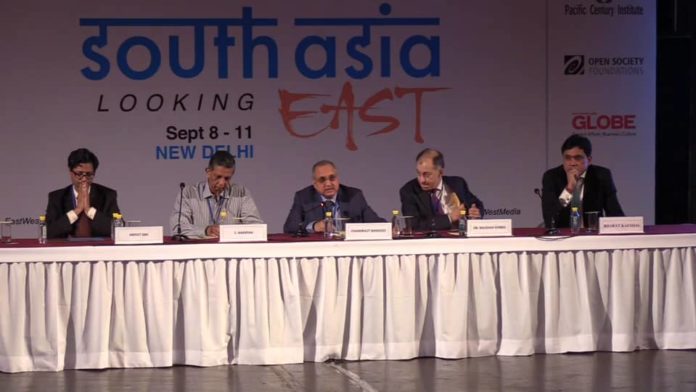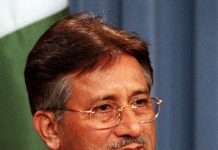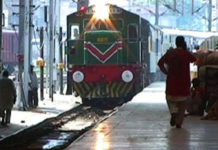Sapna Devi , a businesswoman from Indian state of Gujarat , is confident of good response from Pakistani market for the womenwear products she showcased at SAARC Trade Fair in Lahore. To her, the issue of Indo-Pakistan rivalry is just in the cyberspace. Janata (people) of both the countries have love for each other. The traders from Bangladesh, the country presently at loggers head with Pakistan on different issues especially the executions of pro-Pakistan politicians, are also optimistic about the increase in trade between the two countries. Muhammad Rizwan, a Muslim trader from Sri Lankan capital has ambitions to have sizeable sales of his Sapphire stone products in Pakistani market.
The 12th SAARC Trade fair, organized in Pakistan after hectic efforts over the last three years, was apparently a promising activity for the future of South Asian regional bloc that was formed 30 years ago on 8 December 1985. But these clichés of friendship and friendly relations fail to stand the ground reality. South Asian Association for Regional Cooperation (SAARC), grouping Afghanistan,Bangladesh, Bhutan, India, Maldives, Nepal, Pakistan and Sri Lanka is considered least integrated regional bloc with only 5 percent intra-regional trade. According to estimates of Asian Development Bank, the total volume of international trade of the region is around US $ 550 billion while the intra-regional trade is not more than US $ 25 billion. In contrast to SAARC’s 5 percent, intra-regional trade in European Union is at the lofty level of 55 percent, 52 percent in NAFTA and 30 percent in neighbouring ASEAN region. The incidence of least economic integration in SAARC region is high despite the signing of free trade agreement among the member countries. South Asian Preferential Trade Agreement (SAPTA) was signed in 1993 while SAFTA came into force in the year 2006. But these agreements are not more than just pieces of paper as the region is embroiled in myriad of bilateral political disputes. The member countries have little time to think of any effort for regional integration. India, the country that shares borders with most of the SAARC countries, has always some political or diplomatic row with the neighbours. With Pakistan, it has decades old dispute over Kashmir, that keeps the entire region hostage.
pakistan-and-india-talking-on-trade.jpgDue to this reason, the direct bilateral trade between Pakistan and India is just US$ 2.5 billion while the same volume of trade is being carried out through third countries like United Arab Emirates and Singapore. Economists believe that the removal of tariff and non-tariff barriers can help increase the Indo-Pak trade to US $ 10 billion within no time. Equally is true about the sour relations between India and Nepal as the latter ,a landlocked country, is presently experiencing an economic blockade on the part of India. Sri Lanka and Bangladesh also face similar problems while dealing with India. the intra-regional trade has a potential to rise to the level of US $ 100 billion. Long communiqués at the end of the Saarc Summits or holding of trade shows may not bring any change in the economic well-being of the region that is, presently home to almost 20 percent poor of the world. To facilitate the trade, all the member countries will have to soften the visa regimes and remove the tariffs to encourage initially the suite case trade that may entail the formal consignments across the borders. It is time not to blame each other for obstacles. South Asians have to grab the opportunities to wriggle out of the vicious circle of poverty and ignorance.















